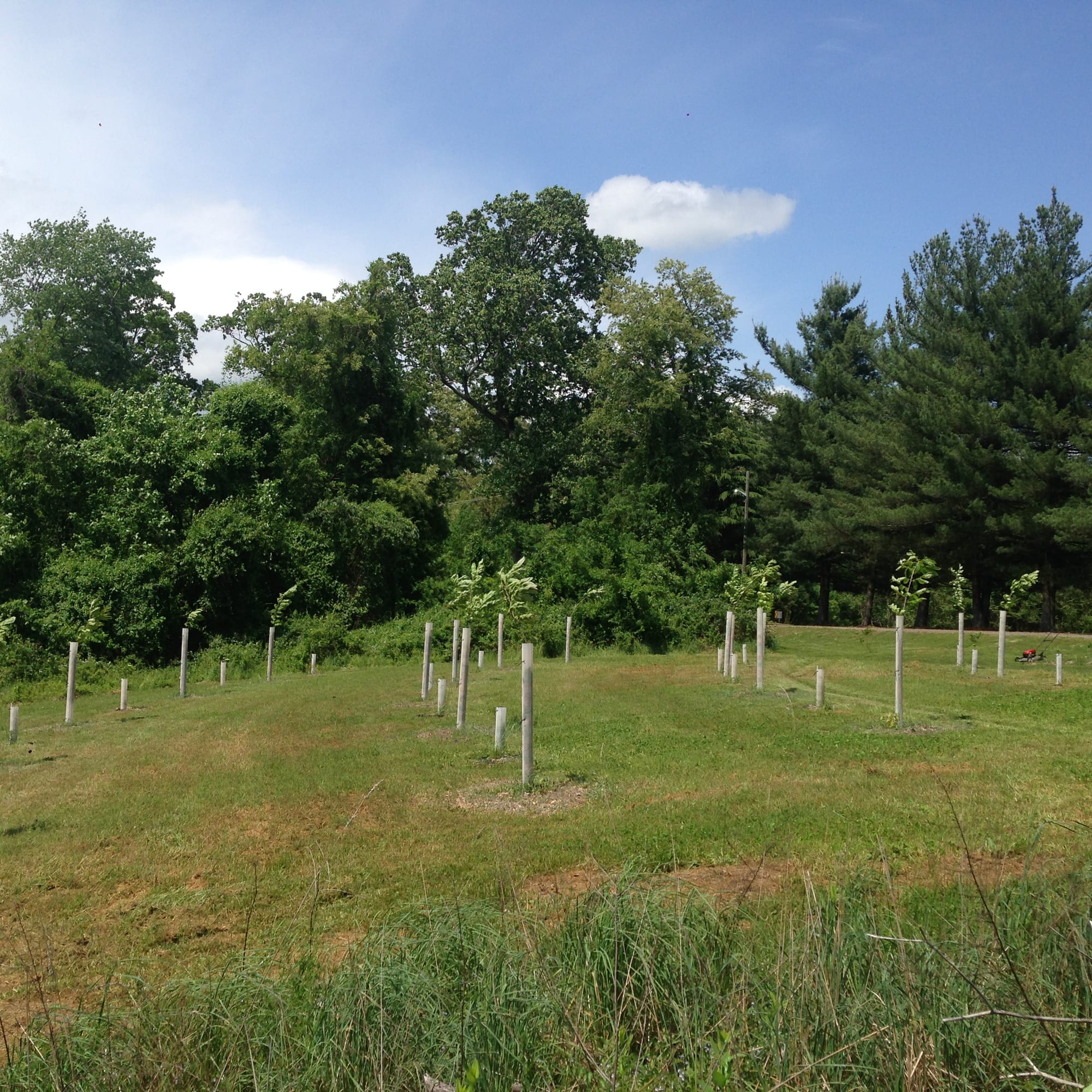Layer by Layer: Designing a Stacked Orchard for Resilience and Yield
We’re building an ecosystem, not just rows. Inspired by forest structure and regenerative design, our layered orchard ensures every plant has a role, every root a purpose, and the harvest is shared between the land and those who tend it.

At Goldberry Grove, we’re not just planting trees — we’re building an ecosystem. Our orchard isn’t designed in rows alone, but in layers. We’re borrowing from natural forest structures and regenerative design to create a perennial system where every plant has a role, every root has a purpose, and the harvest is shared between the land and the people who care for it.
🌳 Overstory: Chestnuts as the Anchors
The backbone of our orchard is the American and hybrid chestnut. These majestic trees form the overstory — the tallest layer that provides canopy, carbon storage, wildlife habitat, and an abundant annual nut crop. Chestnuts are fast-growing, deeply rooted, and central to our food system and ecological restoration goals.
🌰 Understory: Hazelnuts and Hardy Companions
Beneath the chestnuts, we’re planting hazelnuts. Their smaller stature allows them to thrive in partial sun while producing a high-value, high-protein crop. Hazelnuts help fill in the mid-layer of the orchard, offering not only food but wind buffering and pollinator-friendly blooms.
🌿 Alley Cropping with Intention
Between rows of tree crops, we’re planting shrubs and seedling trees that will either be coppiced, layered into future nursery stock, or act as nitrogen-fixers and dynamic accumulators. These alleys are more than walking space — they’re growth lanes for medicinal herbs, biomass, native shrubs, and marketable seedlings.
🍄 Below the Surface: Mycorrhizal Partners
One of our most exciting experiments is integrating porcini and truffle fungi into the orchard floor. These mycorrhizal fungi create symbiotic relationships with tree roots, especially chestnut, oak, and hazelnut. Not only do they help trees access nutrients and water, they can also produce gourmet mushrooms that support the farm’s financial ecosystem. Fungi are the invisible glue that binds this system together.
🌬️ Windbreaks with Purpose
To protect the orchard from prevailing winds and deepen its biodiversity, we’re exploring mixed windbreaks featuring walnuts, hickories, and Korean pine. These species offer nuts, timber, or pine nuts, and also host different fungal companions. Each tree is multi-functional, providing wind protection, habitat, and long-term yields.
🍑 Fruit Breaks and Trail Borders
We’re also considering American plums, persimmons, and pawpaws as field dividers and edible trail borders. These native fruit trees thrive in edge environments and bring both beauty and function to our farm layout. Visitors walking the land will be greeted by blossoms in spring and fruit in fall, reinforcing our vision of a working landscape that feels wild and generous.
Layering isn’t just about stacking for space — it’s about weaving function, beauty, and resilience together. By designing our orchard in vertical and horizontal relationships, we’re crafting a system that feeds, heals, and adapts. This is a forest in the making, one chestnut at a time.

